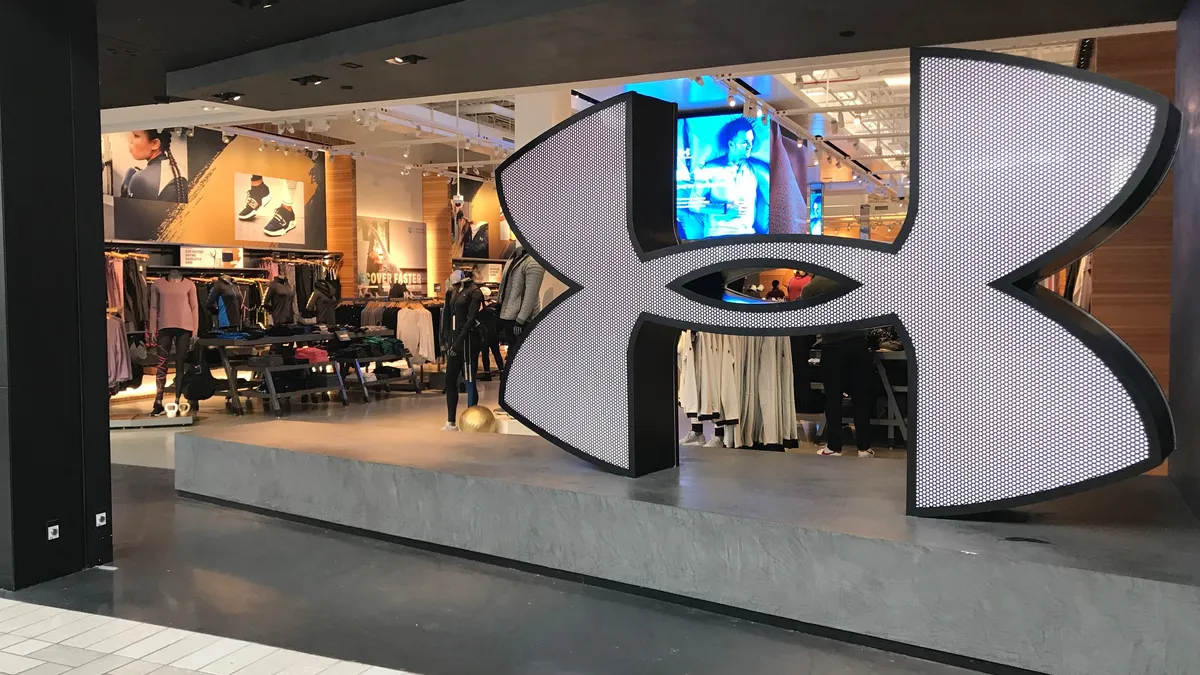Dive Brief:
-
Under Armour on Tuesday reported that second quarter revenue was up 1% to $1.2 billion, slightly missing expectations, according to a company press release. Wholesale revenue was down 1%, while direct-to-consumer revenue rose 2%. Geographically, North America revenue decreased 3% and international business increased 12%.
-
Net loss in the quarter was $17 million, down from nearly $96 million in the year-ago quarter, and operating loss was also down significantly, from around $105 million a year ago to $11 million in the second quarter. Debt was also improved, down 24% from $752 million a year ago to $591 million in the current quarter.
-
Gross margin increased 170 basis points to 46.5% in the quarter, while gross profit grew 5% to $554 million, from $527 million a year ago.
Dive Insight:
While Under Armour posted mixed results for its second quarter, and a projected revenue decrease of 2% to 3% for the third quarter, executives stressed that the brand is now in the second quarter of a five-year turnaround plan and that not all of its changes to the business will show yet.
On a call with analysts, CEO Kevin Plank called it "a great stabilization quarter for us," and emphasized a strong innovation pipeline and more product drops as key to the retailer's strategy.
"Under Armour has demonstrated it has the capacity and is a great brand, and we know that great brands endure," he said, adding that, "operational strength will truly unlock our creative stroke for this company and we're in the process of moving toward that."
In addition to centering its strategy around newness, executives are decreasing promotional activity and refocusing the brand on full-price products, though a note from B. Riley FBR warned that fashion misses could be a risk to the brand going forward.
"Under Armour continually develops new, innovative products, which might not resonate with the consumer and could, therefore, cause the company to mark down products to liquidate them," according to the note, which was emailed to Retail Dive.
Executives, however, stressed fewer excess inventory problems than in the past, and noted that despite lower off-price sales, 90% of the business in North America is still outlet sales, which are seeing higher conversion rates.
"I think we're kind of bullish on the North American consumer," Chief Operating Officer Patrik Frisk said on the call. He noted that footwear was a particularly strong category for the retailer in the second quarter, with revenue in the segment up 5%, while apparel revenue decreased 1%.
"We are very rapidly as a company starting to learn and understand how to launch platforms in footwear and then how to build on them … it's a real highlight," he said.
Second quarter numbers aside, executives were laser-focused on building Under Armour's brand back up and avoiding being labeled as a "boring brand" by consumers.
"We expect to be a much quieter company and a much louder brand," Plank said. "We feel like we're on our front foot," he later added. "We feel like we wouldn't be able to say that a year ago."















